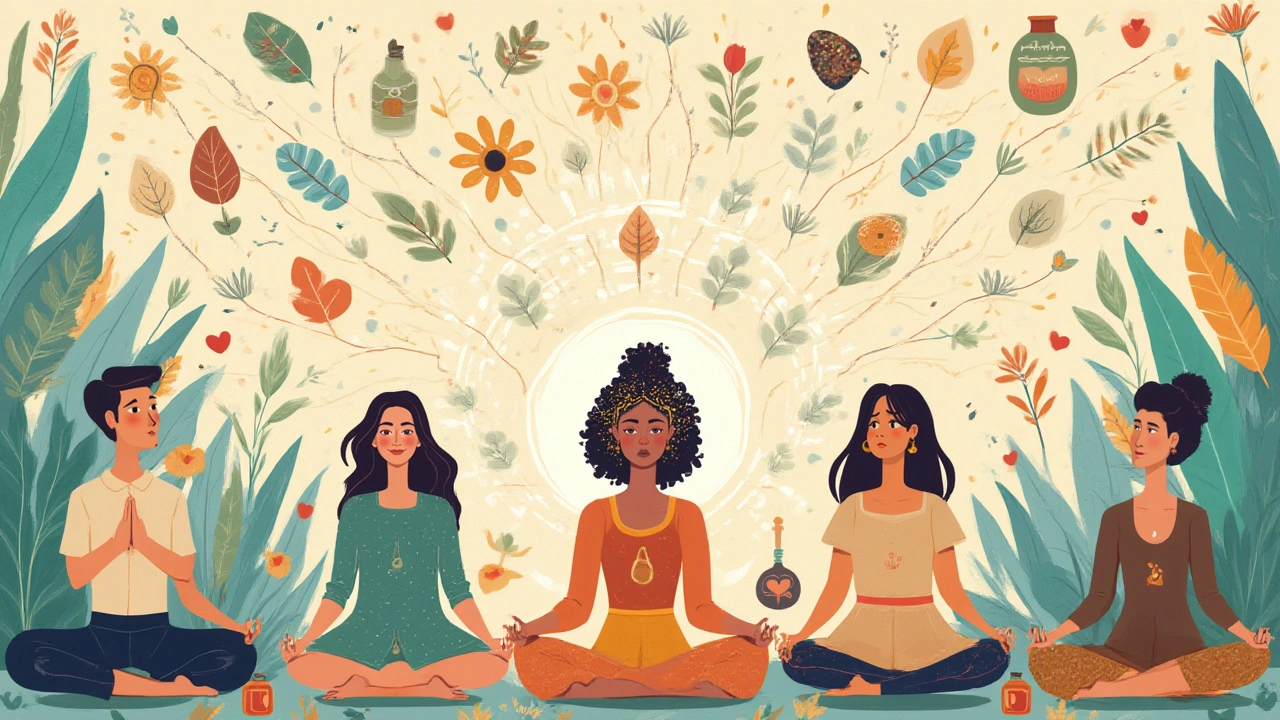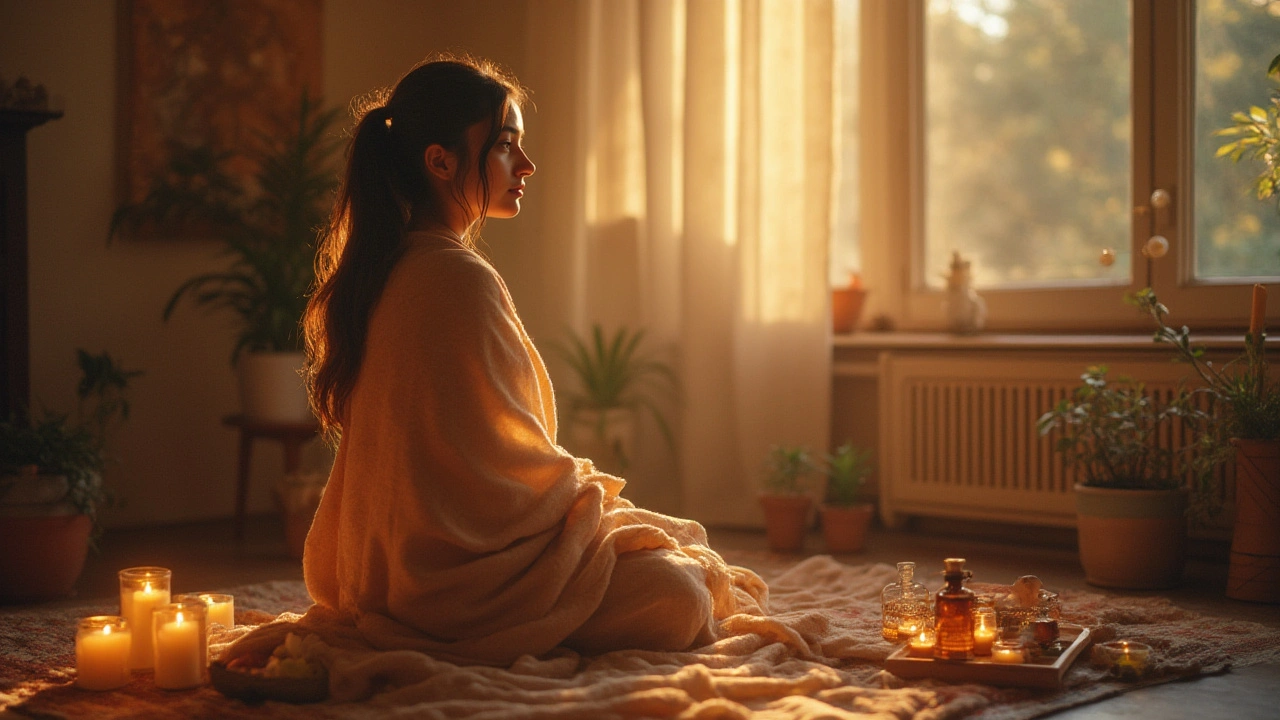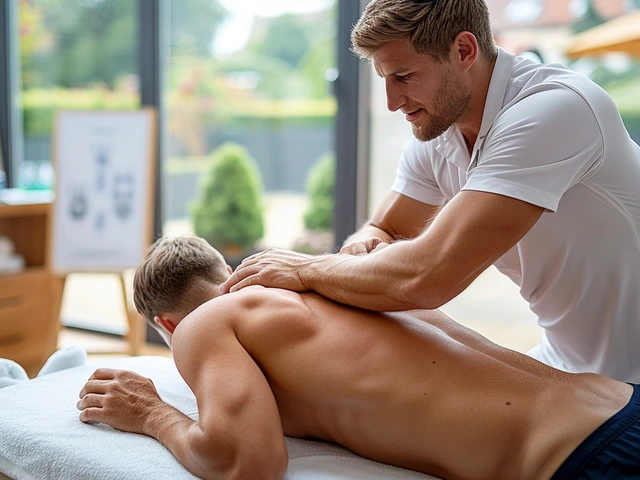Imagine lying on a warm massage table, golden herbal oils slowly being poured and rhythmically massaged into your skin—every muscle unwinding, every worry draining away. That’s the vibe of an Ayurvedic massage, a therapy that’s got thousands of years of history and a pretty passionate fanbase. While trendy spas around the world now offer it, this isn’t just another self-care fad. People notice deep changes, inside and out. In a world of quick fixes and fleeting wellness crazes, Ayurvedic massage stands out because it goes way beyond relaxation.
What Is Ayurvedic Massage and Where Did It Come From?
Ayurveda is all about balance. It literally means “the science of life” in Sanskrit, and it’s an ancient Indian system that looks at the whole human: mind, body, and spirit. Ayurvedic massage—also called Abhyanga—uses specially prepared oils based on your unique dosha (your energy type: Vata, Pitta, or Kapha). Instead of one-size-fits-all, you get a totally customized experience. The techniques are designed to clear energy channels (called nadis) and move stagnant stuff around, so every cell wakes up and starts healing.
Abhyanga isn’t new. Written texts describe treatments just like this going back over 2,000 years. Even modern science is jumping in, and you’ll find actual medical journals studying Ayurvedic therapies for anxiety, pain, and chronic stress. The practice caught on around the globe in the past few decades, but in India—it’s part of daily life for so many families. Kids there sometimes grow up having head massages with coconut and sesame oil at home—it’s a regular thing, not a luxury.
What makes it unique? Most Western massages work on muscles, knots, and pain spots. Ayruvedic massage is always full-body, super-oily, and usually slower and more rhythmic. It follows energy lines, not just anatomy charts. The oils matter—a lot! They’re sometimes heated and almost always infused with plant extracts, each chosen for a reason. Some therapists even use two or four hands working in sync. It’s totally different from a Swedish or deep-tissue massage you may know.
The Science-Backed Benefits of Ayurvedic Massage
Why does Ayurvedic massage leave so many people feeling like a new person? The answer’s in the details—specific strokes, temperature, pressure, and the properties of therapeutic oils. And it isn’t just about feeling good in the moment. Studies have shown that Abhyanga helps cut stress hormones, boosts circulation, improves sleep, and even supports immune function. In a 2022 clinical trial from Germany, people who had weekly Ayurvedic massages reported lower anxiety, less muscle tension, and better mood for up to two months after their last session.
Let’s break down a few standout perks:
- Deep Relaxation and Stress Relief: The combination of touch, scent, and warm oil works directly on your nervous system. It slows your pulse and signals your body to chill out.
- Natural Pain Management: The calming effect on joints and muscles often helps people with stubborn pain or chronic tightness. Therapists know which areas to target based on your symptoms.
- Better Circulation: The strokes guide blood flow and help sweep away toxins known as ‘ama’ in Ayurveda. A 2023 review in the Journal of Ethnopharmacology highlighted improved cell oxygenation and lymph movement after a series of Abhyanga sessions.
- Healthy Skin: No synthetic lotions here! Ayurvedic oils are packed with antioxidants, vitamins, and anti-inflammatory herbs. Regular massage can help with roughness, dullness, and even some skin conditions like eczema.
- Hormone Support: Some sessions focus on the head and upper spine, which can help regulate your body’s stress and reproductive hormones by stimulating the pituitary gland.
Let’s take a quick look at data from a recent survey of 400 Ayurvedic therapy participants in India and Europe:
| Benefit Noticed | % Reported |
|---|---|
| Improved sleep | 82% |
| Reduced muscle pain | 74% |
| Softer, clearer skin | 68% |
| Less anxiety | 80% |
| Greater energy | 53% |
Many people combine Ayurvedic massage with other Ayurvedic practices like herbal tea, self-massage, or meditation. It doesn’t have to be all or nothing—even just trying Abhyanga once a month can boost your mood and help with stress wind-down at night.

How Does an Ayurvedic Massage Really Work?
Here’s what you can expect: It usually starts with a quick consult about your lifestyle, mood, pains, and skin type. Your therapist asks about any health issues or goals—think knotty shoulders, dry skin, or insomnia. Then they choose the right oil blend for your dosha. If you’re a Vata type (tends to be anxious, always cold), sesame oil is common. For Pitta (fiery, overheated types), coconut or sunflower oil soothes. Kaphas (slower, heavier types) often get lighter oils like mustard or flaxseed.
The oil is gently warmed and poured onto the body, not just rubbed in. Your therapist uses gliding, rhythmic movements, alternating with kneading and tapping. If you’re curious to know the main techniques, here’s a little secret: Abhyanga uses strokes along the muscle (not across it), spiral motions around joints, and steady, even pressure. It’s not about digging in; it’s about awakening energy and connection.
You might notice some routines feel predictable—legs, arms, back, belly, chest, neck—while others focus a lot on your scalp, ears, feet, or even your face, depending on what’s needed. The head massage, called Shiro Abhyanga, is a game-changer for tension headaches and screen fatigue. Foot massage (Padabhyanga) is often used for deeper grounding and improving sleep. Sometimes, the therapist will also add herbal compresses or gentle heat packs for extra muscle release.
Unlike most massages in the West, you might be encouraged to rest after the session and avoid showers for an hour or two so the oils can soak in. Folks who try Abhyanga say that after half an hour, the feeling of “melting” into the table is so intense it’s hard to get up. While one session is nice, regular practice—say once a week or every other week—usually gives the best results, especially for chronic pain, dry skin, or emotional burnout.
Curious about the science? Research from the International Journal of Ayurveda Research suggests that Abhyanga can lower cortisol (the stress hormone) by up to 23% after a single 60-minute session. The effect is even stronger if you pair it with calming music or deep breathing. And if you’re worried about oily skin—don’t be. Many oils are non-comedogenic and actually balance your skin’s own oil production instead of clogging pores.
Who Can Benefit Most From Ayurvedic Massage?
You don’t have to be super into alternative health to enjoy this. Anyone who deals with stress (read: nearly everyone in 2025), athletes in need of muscle recovery, busy parents running on empty, and people working at desks for hours can all benefit. If you have insomnia, hormonal swings, or stubborn back pain, this therapy could be your new best friend.
Of course, there are a few things to keep in mind. If you’re pregnant, it’s smart to talk to your doctor first and work with a licensed therapist who has training in prenatal care. People with certain skin conditions (open wounds, severe rashes) or acute illnesses might want to skip or adjust the oils used. And those with severe allergies should always do a patch test beforehand.
- Looking for more focus? A head massage with Brahmi oil helps boost concentration and eases headaches from too much screen time.
- Need a better night’s sleep? Warm sesame oil abhyanga before bed is an old-school Ayurveda hack for tossing and turning.
- Recovering from a cold? Therapists often blend ginger, camphor, or eucalyptus oils to loosen up the sinuses and chest.
Plenty of people dealing with burnout or emotional overwhelm say Ayurvedic massage helps them feel “reset”—not just pampered, but genuinely recharged. Unlike a sports massage, Abhyanga doesn’t leave you sore the next day; you’ll likely feel softer, lighter, and more clear-headed. One tip: after your first massage, drink warm water or ginger tea to help your body flush out any built-up toxins released by the treatment—it really works.
According to Ayurveda hospitals in Kerala, more than half of patients seeking massage therapy have chronic conditions like arthritis, asthma, or migraines. More clinics are even offering special Abhyanga sessions for cancer survivors and people with autoimmune diseases (with medical supervision). The gentle oils and steady touch are especially useful for older adults or anyone with fragile health who can’t do intense deep tissue work.

Tips to Try Ayurvedic Massage at Home
Here’s the cool part: you don’t need to book a flight to India or shell out hundreds at a boutique spa. Ayurvedic massage can easily become a DIY ritual, even if you just have 15 spare minutes in your day. Here’s a simple step-by-step to get started:
- Pick your oil. Sesame oil is great for most, but if you run hot, try coconut. Warm it gently in a bowl of hot water.
- Undress and sit on an old towel or in your bathroom (it can get slippery!).
- Start with your scalp. Use your fingertips to rub oil in slow circles from front to back. Take your time!
- Move to your face, neck, then down each arm using long strokes followed by gentle squeezing around elbows and wrists.
- Massage your torso clockwise—it helps with digestion. Knead your belly gently if you feel stressed.
- For legs: use long strokes from ankle to thigh, spiraling around the knees. Don’t forget your feet—spend extra time here since so many nerves end in your soles.
- Let the oil soak in for 10-20 minutes, then rinse off with warm water—or just towel gently if you like the glow.
You can add a few drops of lavender, sandalwood, or frankincense essential oil if you want to dial up the scent and get extra calming effects. Play your favorite mellow playlist, dim the lights, and make it your mini-retreat. If you make it part of your weekly routine, your joints and mood will thank you.
One more pro tip: If you’re always short on time, try a mini-version focusing just on your feet and head. Even five minutes here can cut stress fast and improve your sleep the same night. And don’t worry about doing it “wrong”—Ayurveda is all about tuning in to your body and finding your own way.
With consistent practice, you’ll start to notice not just surface changes (softer skin, looser muscles), but real shifts in energy and resilience. No wonder people all over the world, from New York to Mumbai, keep coming back to this ancient art—it really delivers.






